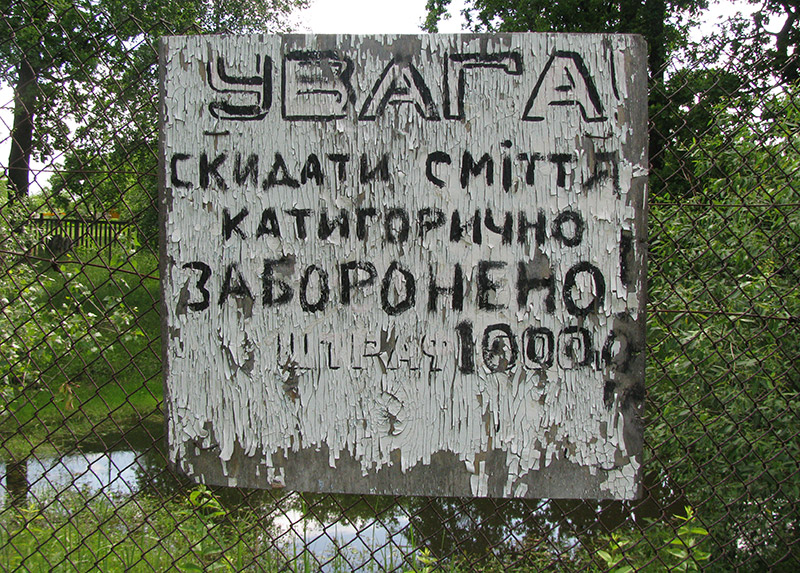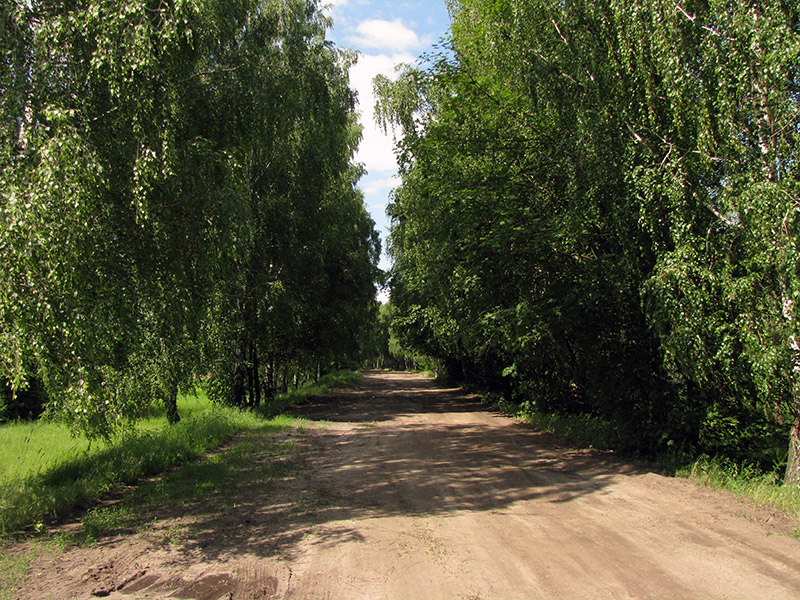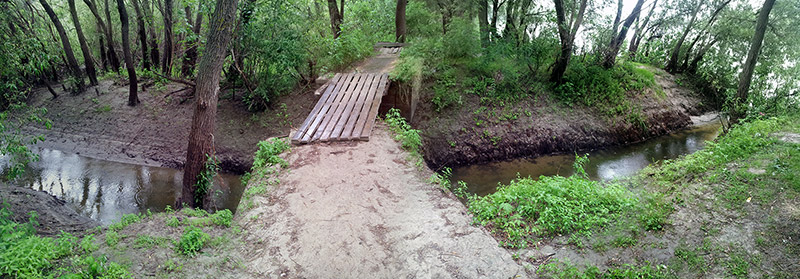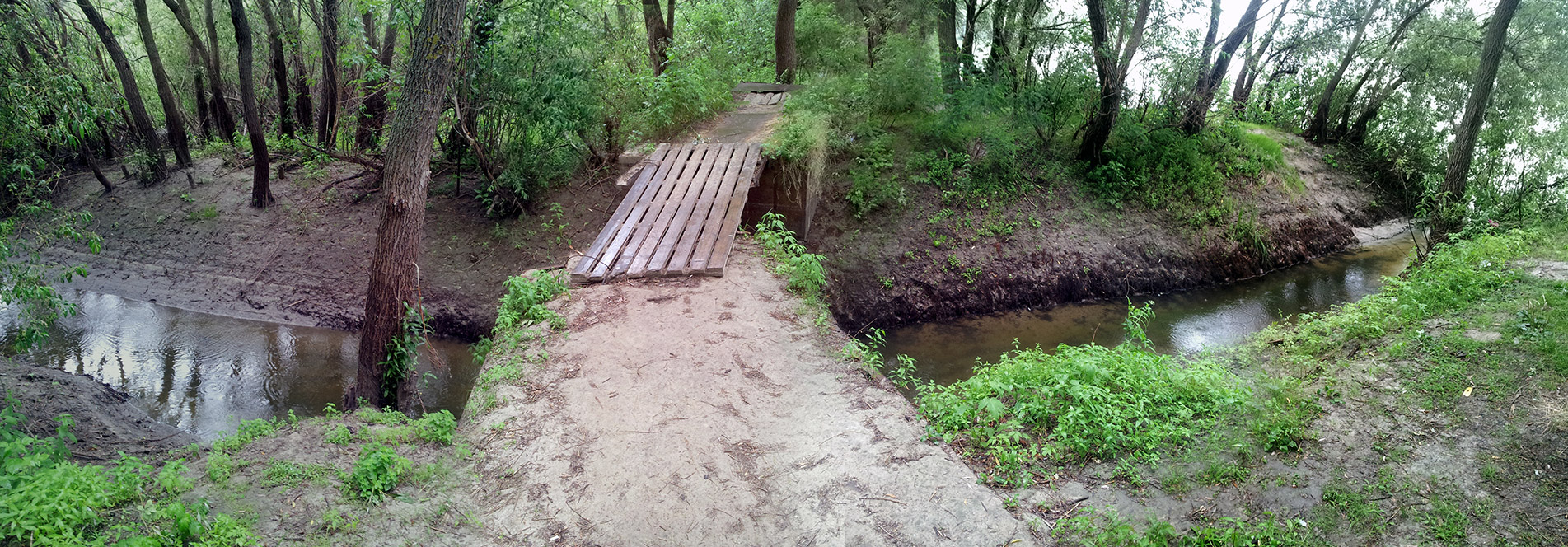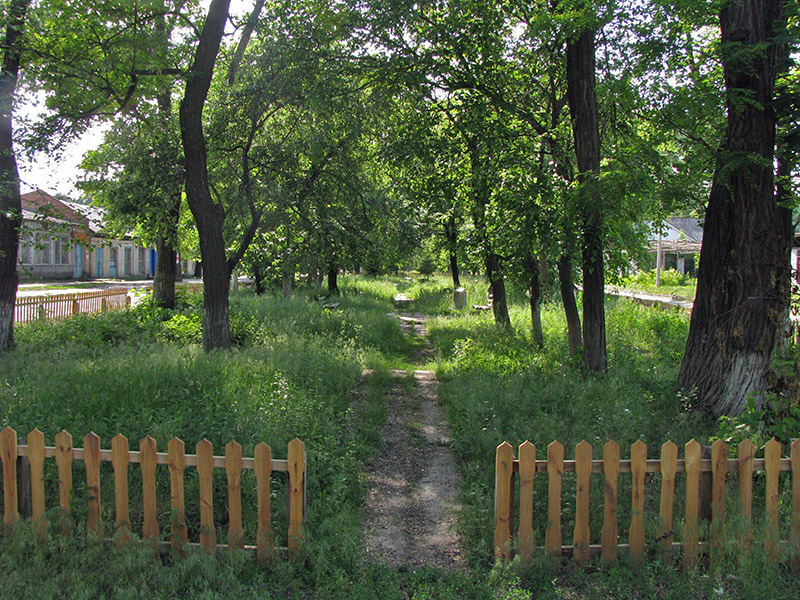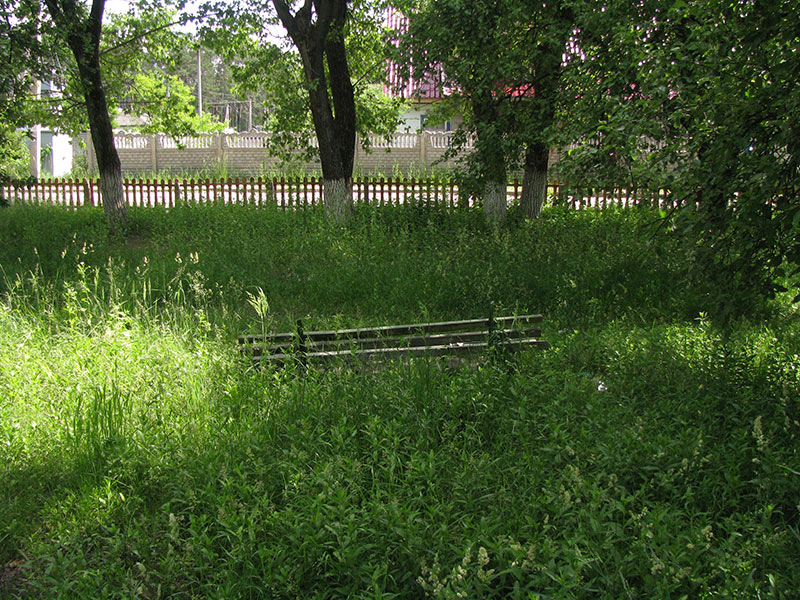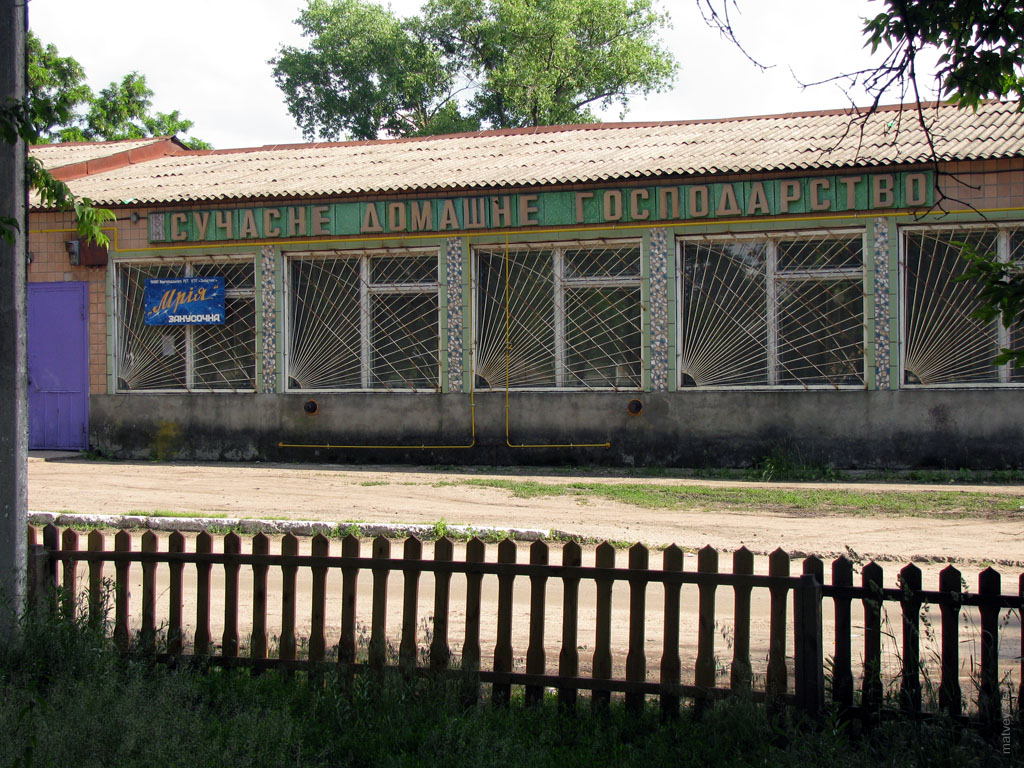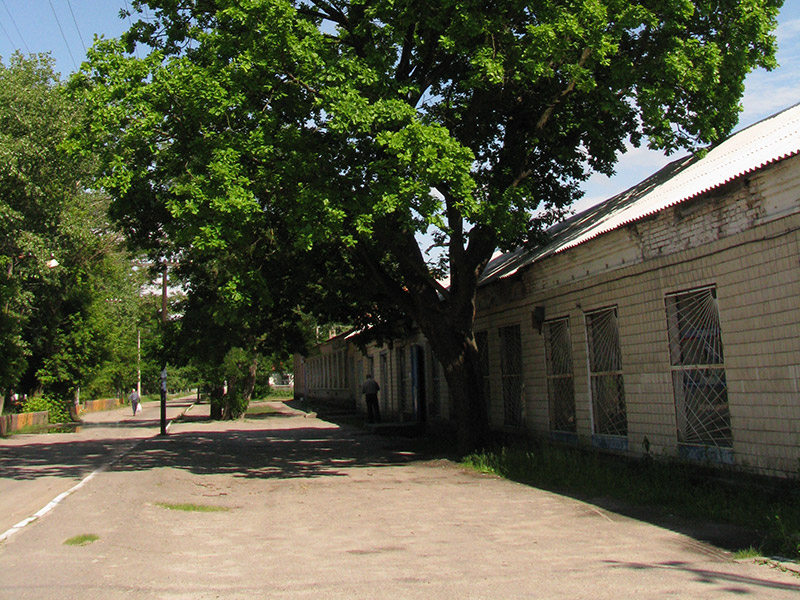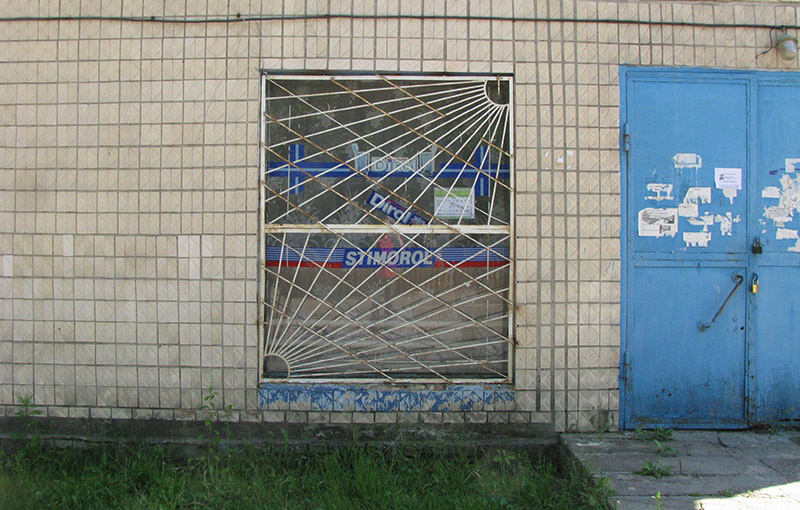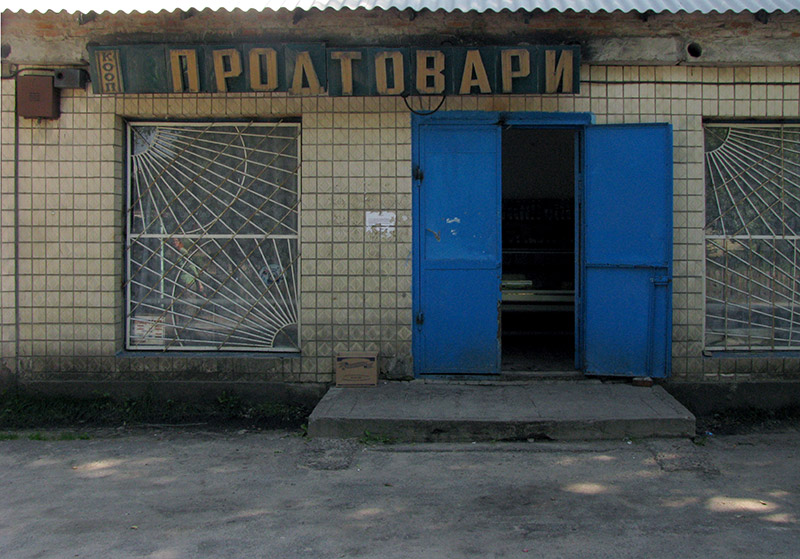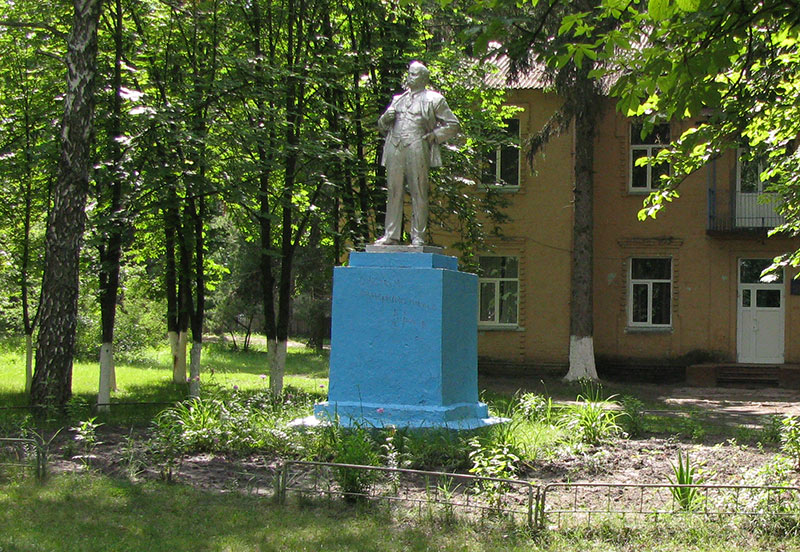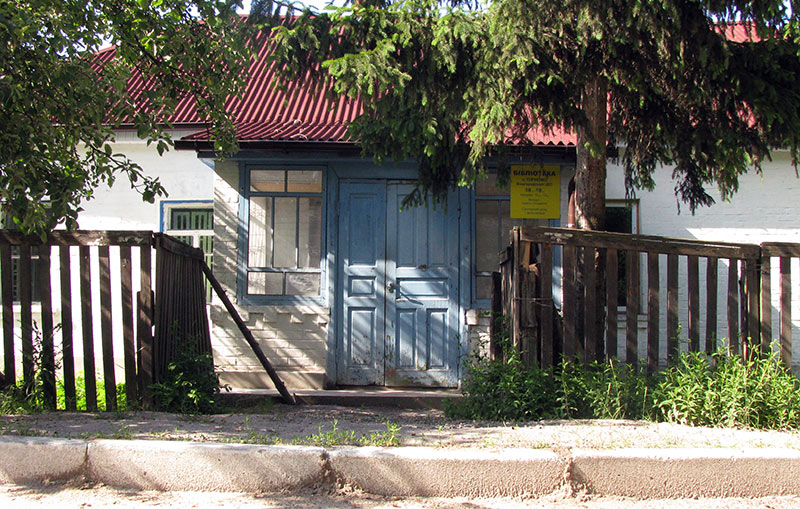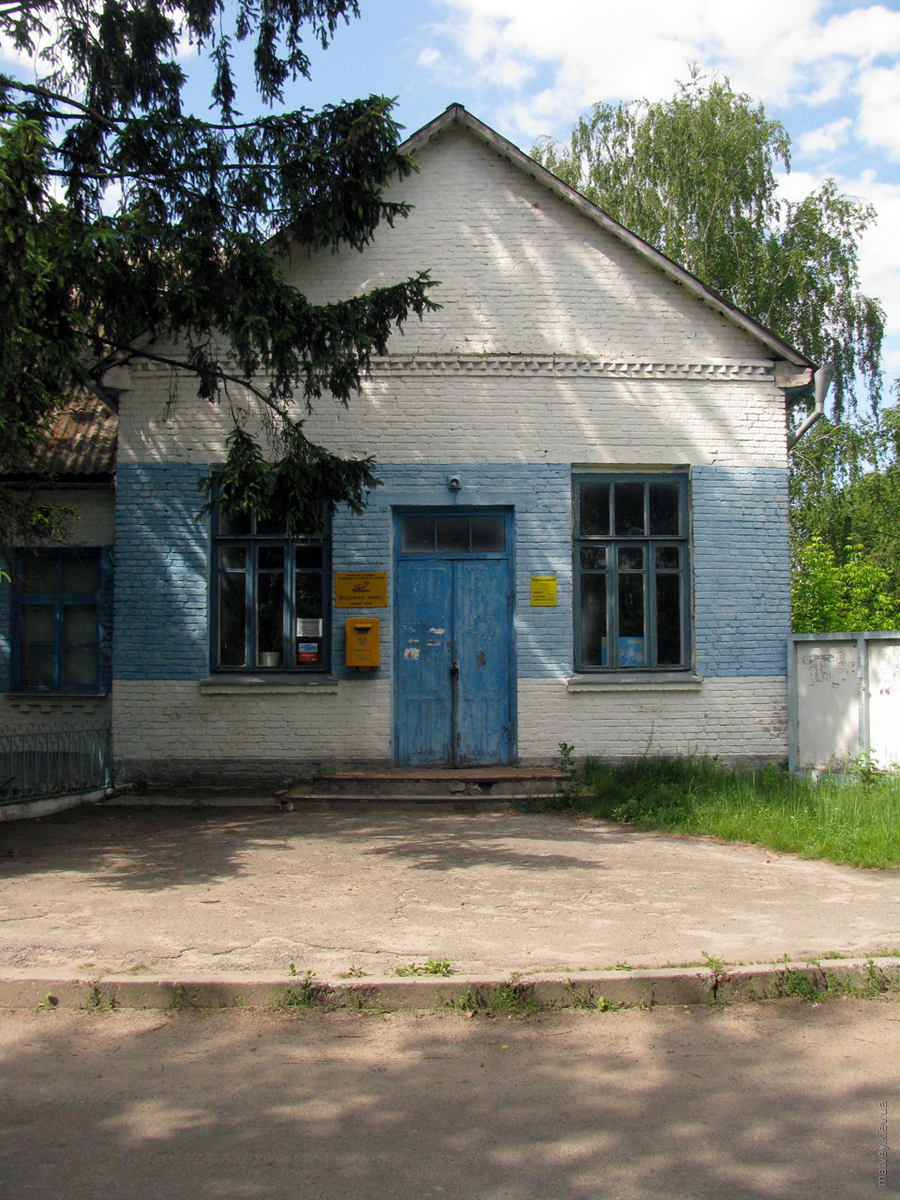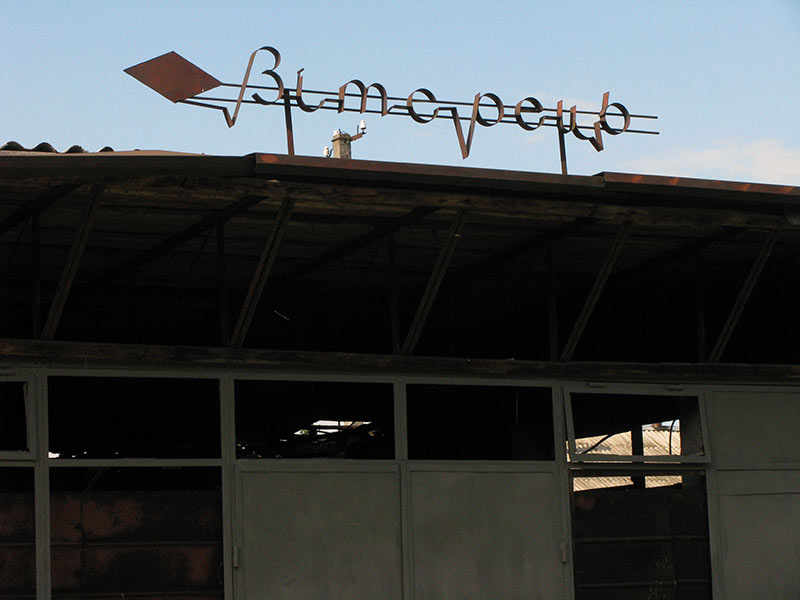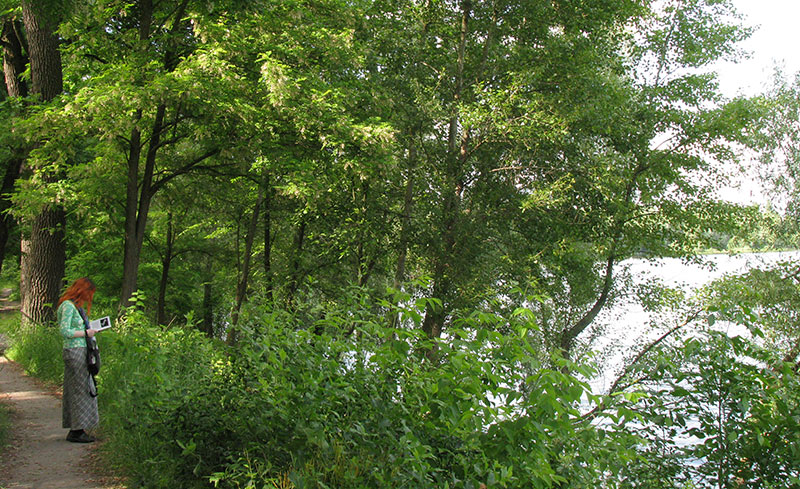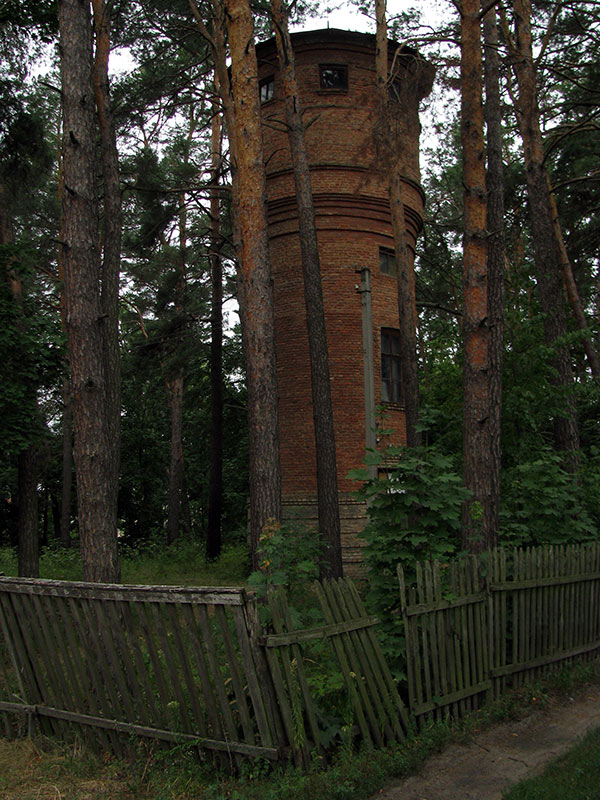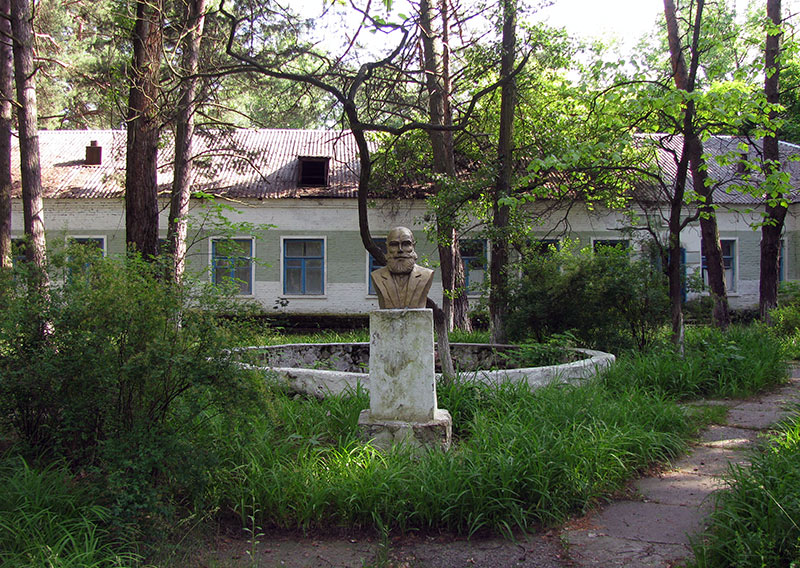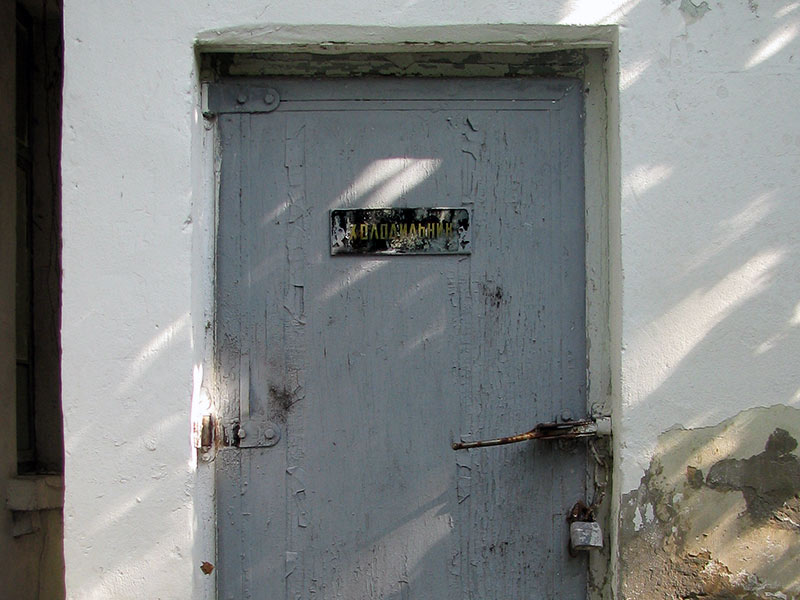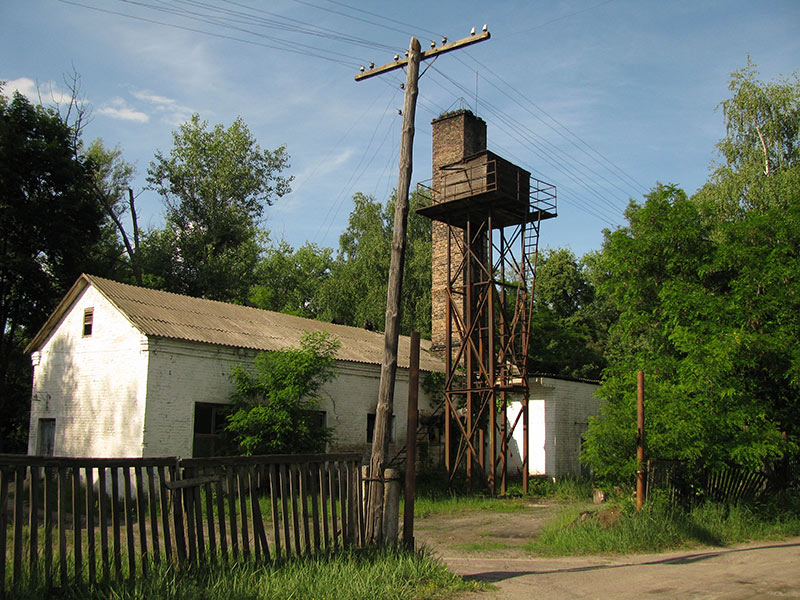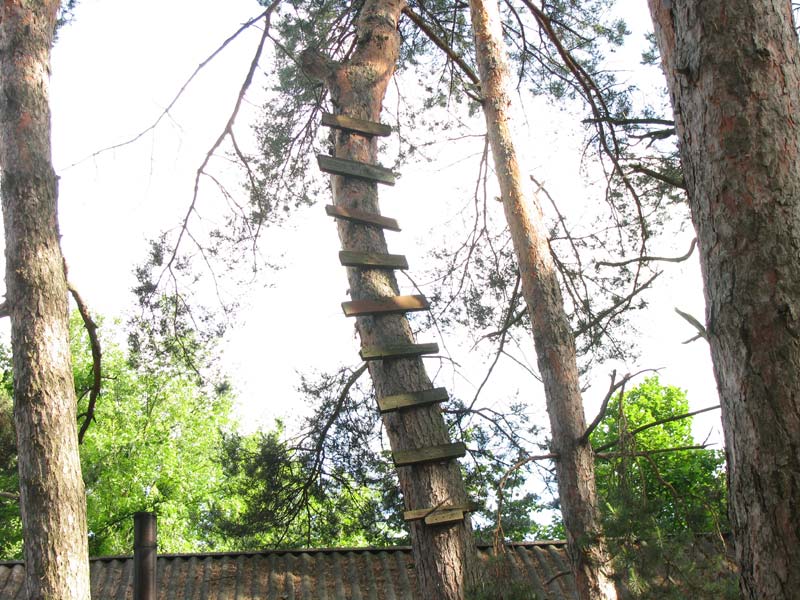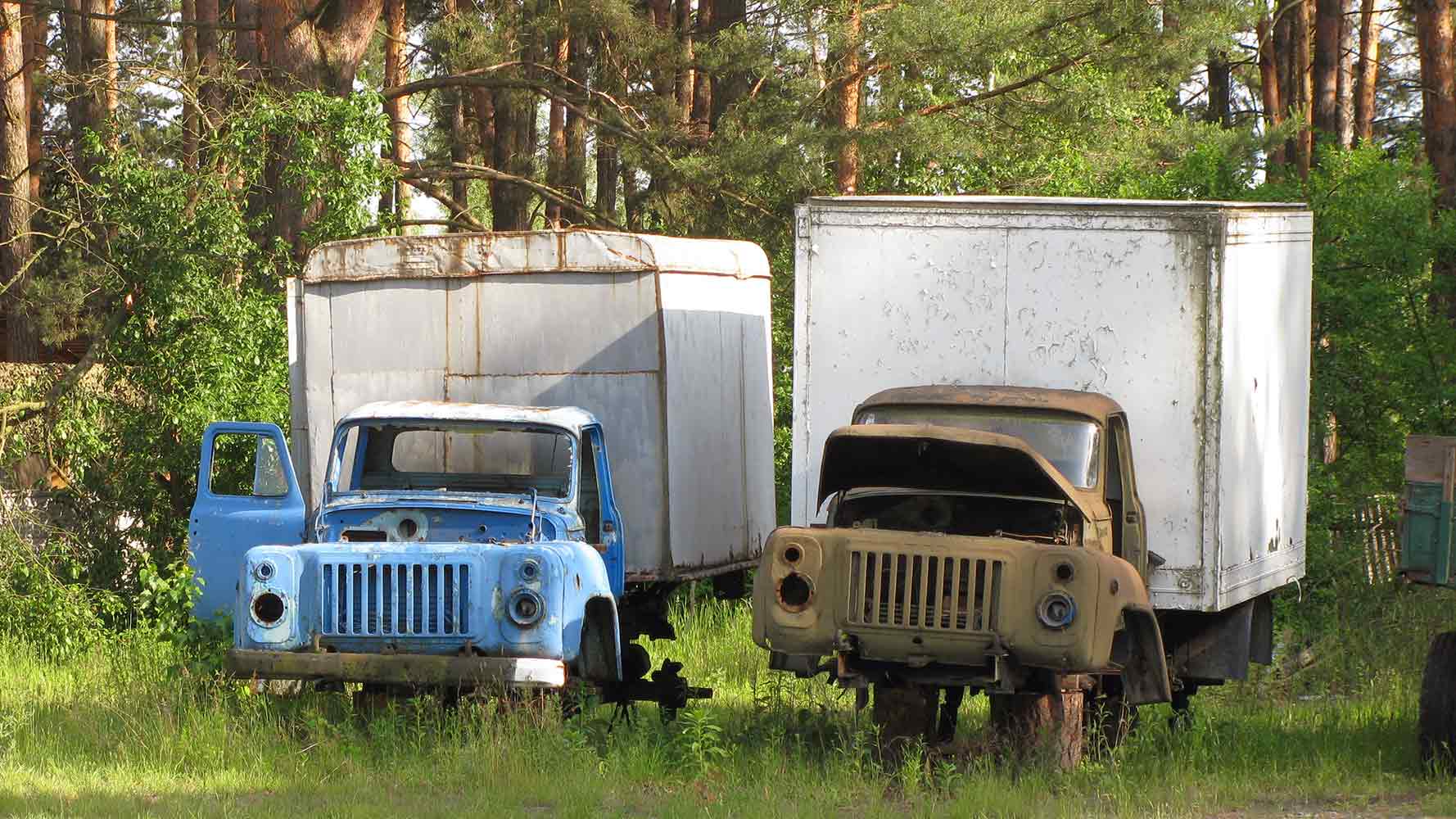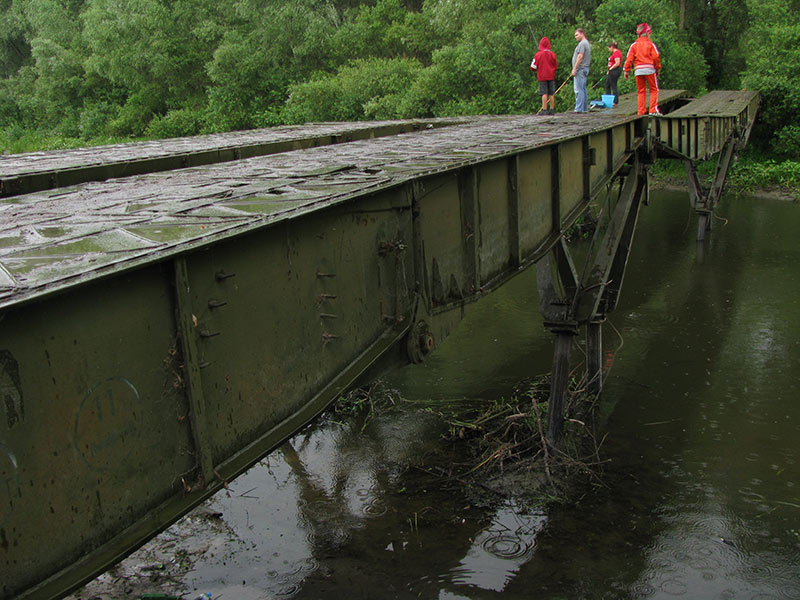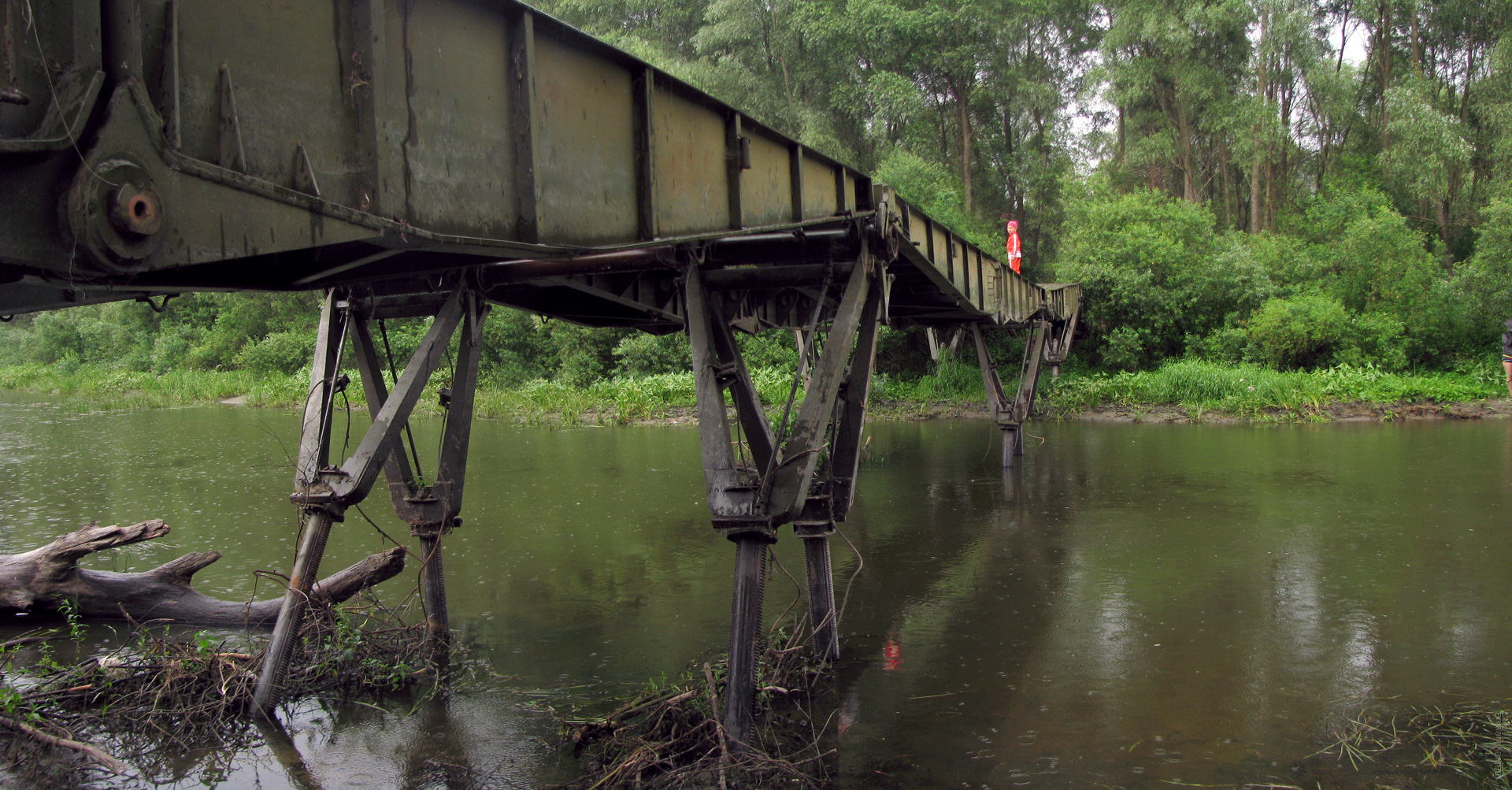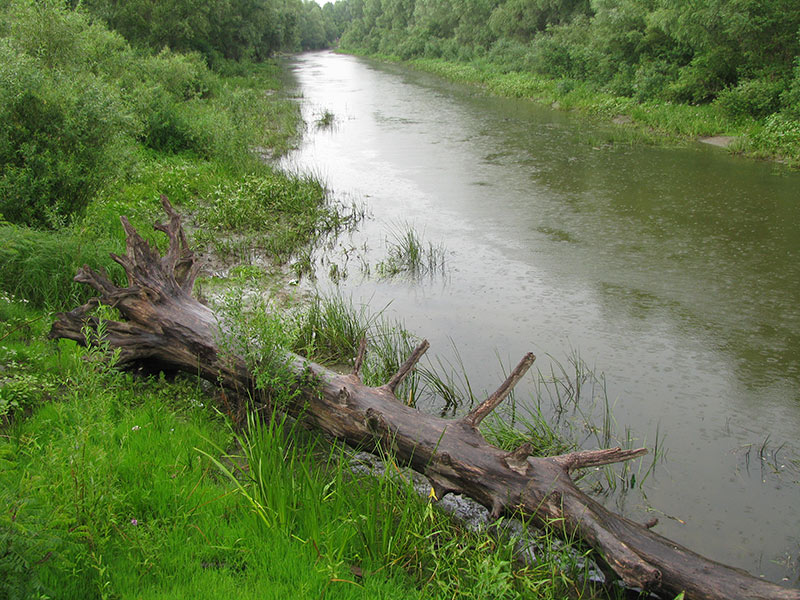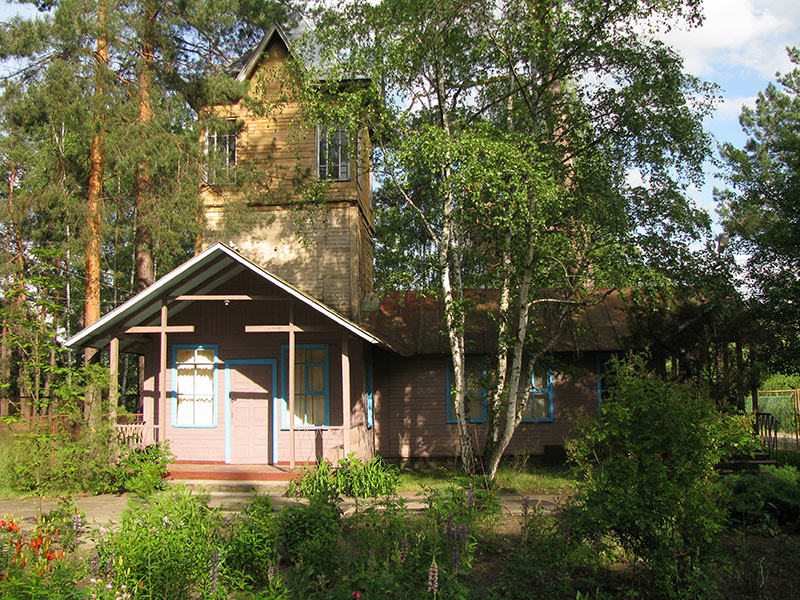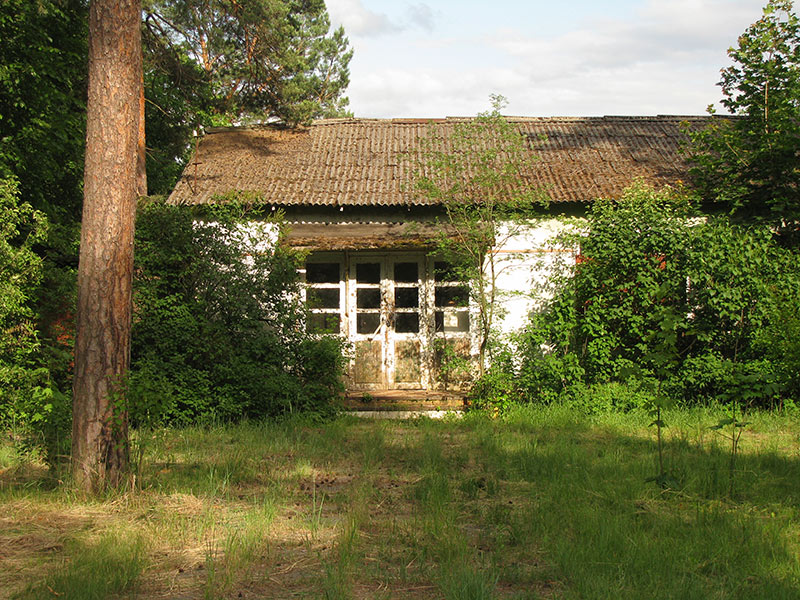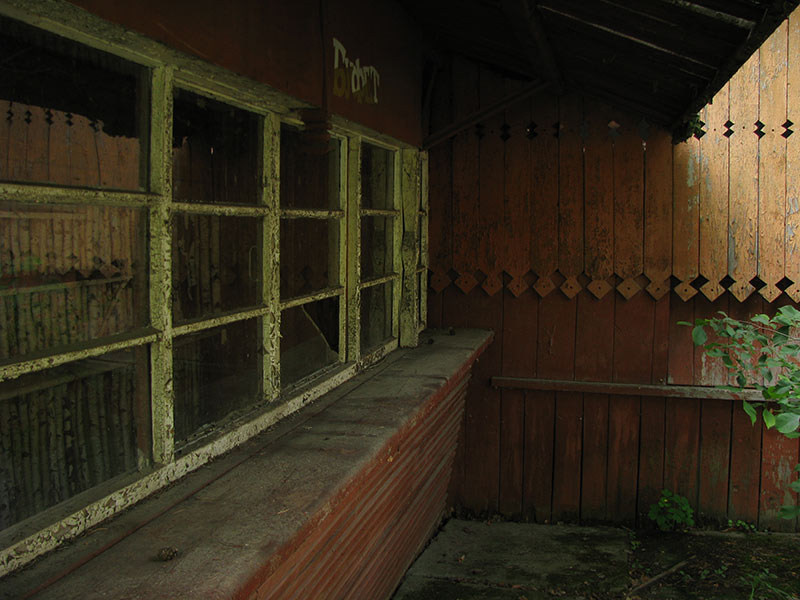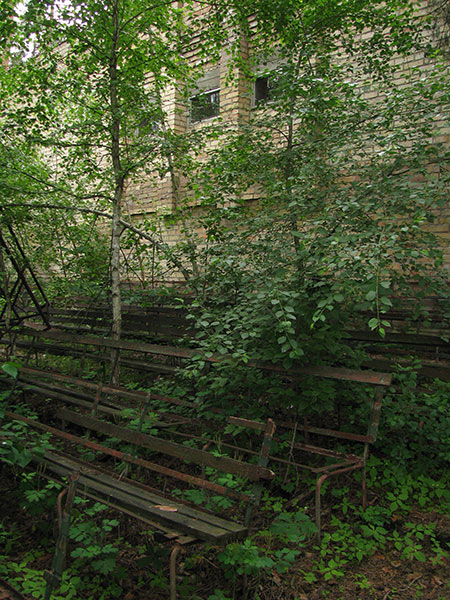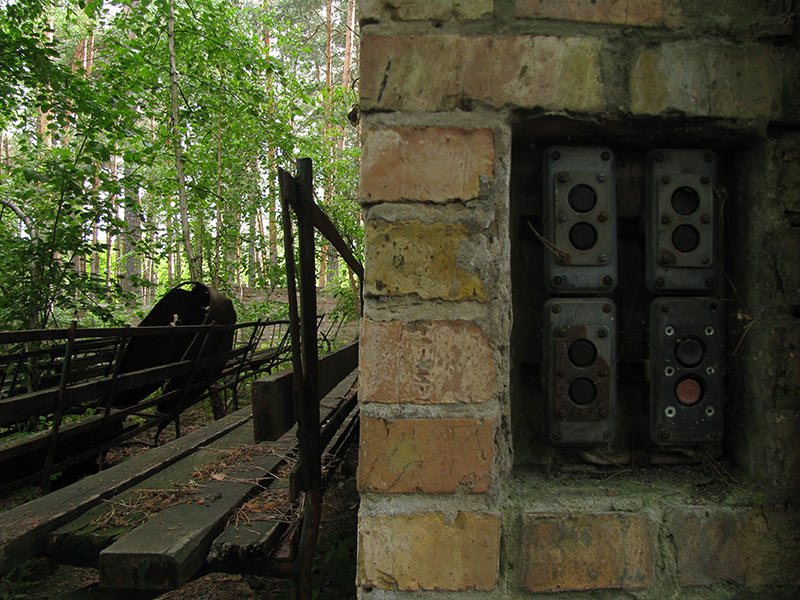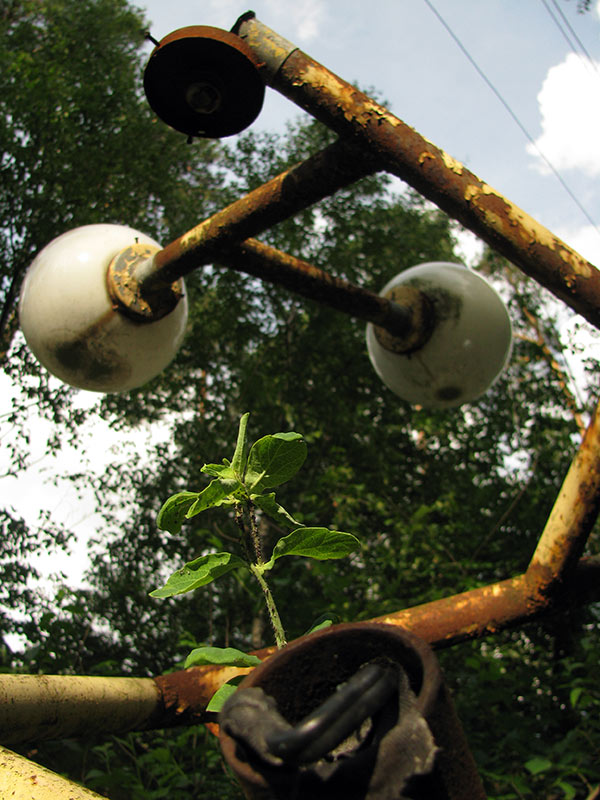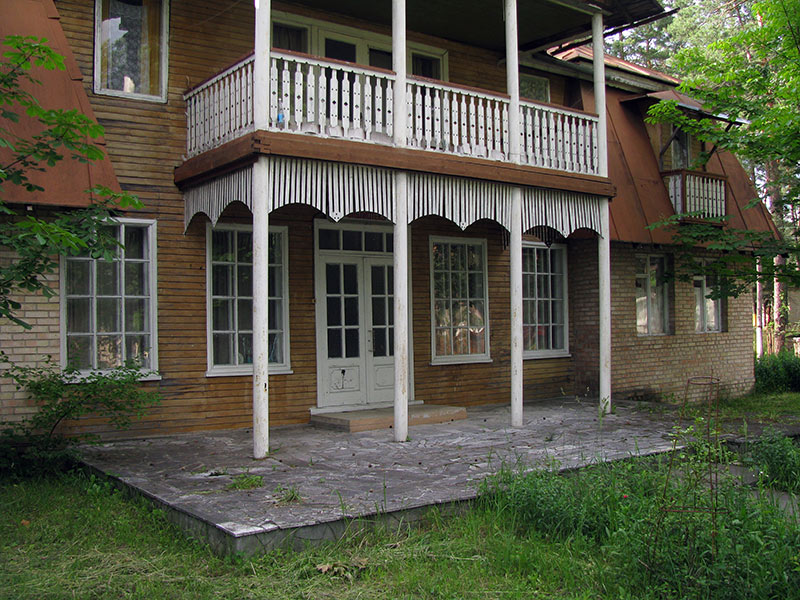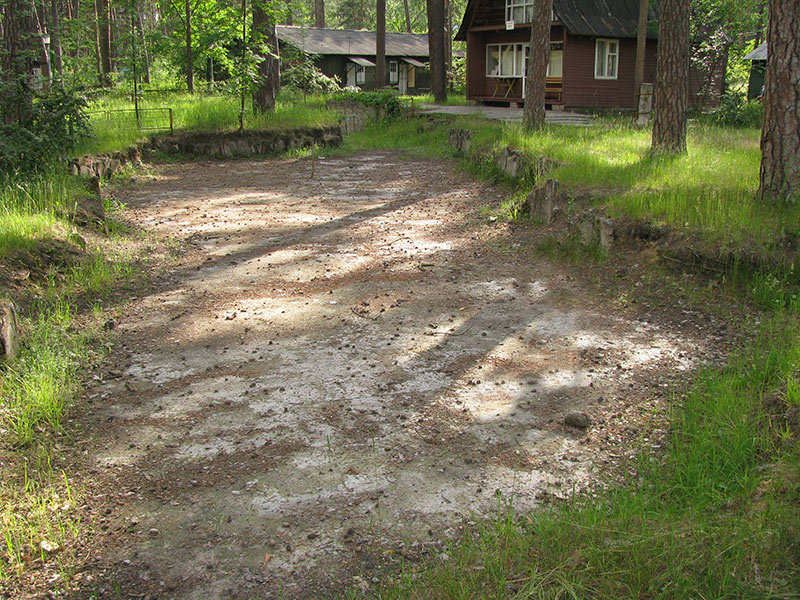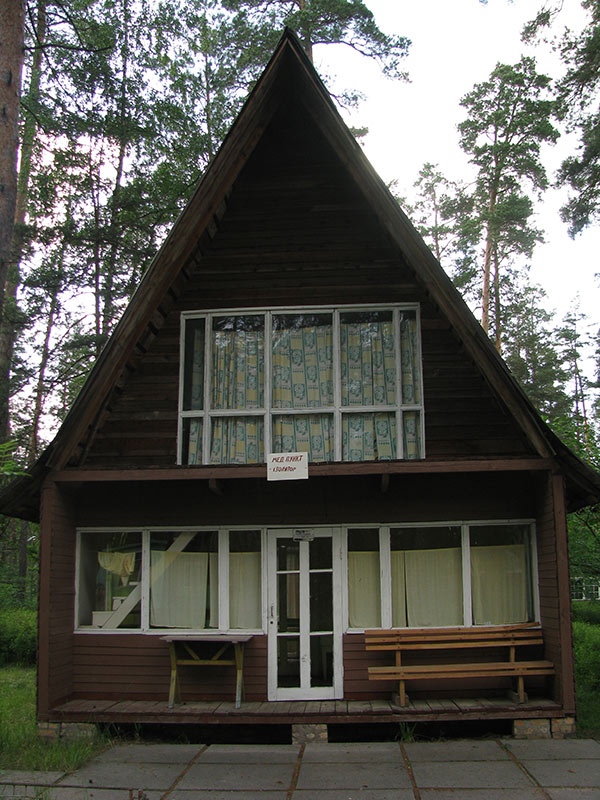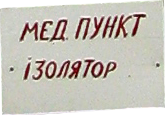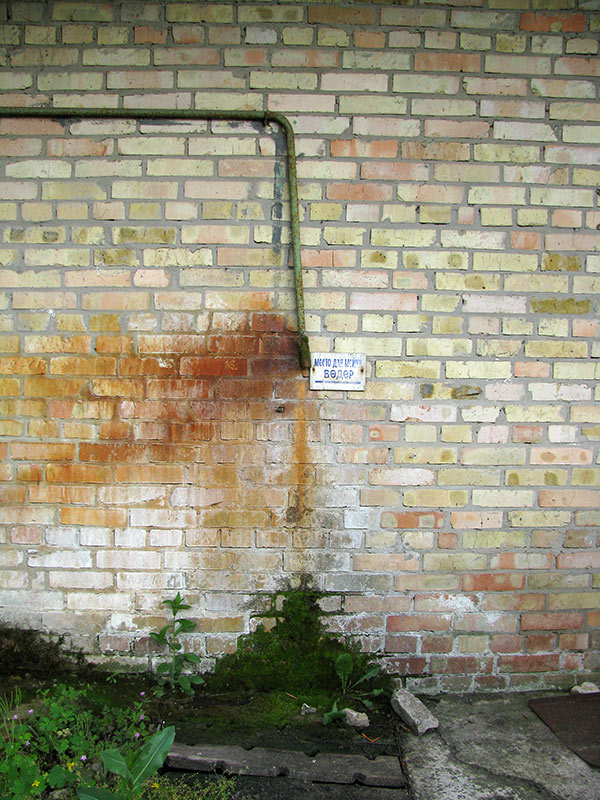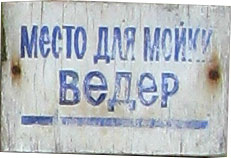I accompanied a person in her pilgrimage to a place from childhood. First things first, we were trying to find a place she remembered to be called «in the shore». Must have been some lowlands near an old river bend. We did not find it, and went elsewhere.
We saw a homemade sign against littering that had a mistake.
An unpaved road went in the direction of nearby villages Voropayiv and Zhukyn.
This little stream was connecting two parts of an old meander, and a simple crossing was available. What a nice place.
This was the center of the village. The boulevard was named after Lenin, of course. The pedestrian middle of the boulevard was abandoned and given to the grass. A few wooden benches were decaying there.
Village shops were gathered into a cluster. Goods for home and gardening, food — everything was here, in these barracks. There was a logo of Stimorol chewing gum hanging, but that gum hadn't been sold in Ukraine for several years already.
The shop name had a typo in it.
A silver monument to Lenin near the school.
A disused kiosk called «Viterets» («Windie»).
A paved footpath existed on the very riverbank of Desna.
A water tower lower than the surrounding trees.
The village hospital was all between the trees. Stumbled upon a bust; uploaded it on Panoramio later, and people took it to Wikipedia from there, identifying it to be Ivan Pavlov.
The doors with the sign saying «fridge» on the hospital territory.
Would have been cool to get up this tower, but I did not do that.
This pine tree with planks nailed resembled a spine.
There were many recreational bases in all the villages on Desna, Pirnove among them. The rumor had it that Chornobyl disaster had spoiled the reputation of many of these bases, rendering them empty and almost completely abandoned.
These times have passed. It was not contaminated, and the nature flourished. Rich people were buying land and complete recreational territories, turning them into something modern and expensive. There were many expensive black cars of the rich in Pirnove.
We wanted to visit a recreational base called «Desna». It wasn't yet bought by someone rich, and stood semi-abandoned, but operational. A bridge to an island stood near. The water body is another old meander of Desna.
That meander, of course, was called «Staryk» (The old one) and didn't look wide enough to have held the whole water flux of Desna.
The Desna base had staff and clients on site. If I got it right, the base belonged to the Kyiv's «Kvant» factory.
The canteen. I was told that there once was a grand piano inside.
A former open cinema. The stage and the screen were completely taken down. The kids who were playing nearby, told us to beware of snakes.
An lantern of elaborated design was slowly losing the fight with nature.
The library was maintained and looked nice. I was told that it even had books from India.
A former park pond. The rocks from its siding were stolen.
The medical cabinet was also well maintained, and resembled a dollhouse (in a good sense of it).
It was here, in a vast, beautiful mixed forest inhabited by nightingales and starlings, where wild strawberry grew — where we stumbled upon this important place for washing buckets.
A few myths and rumors to end this page. I was told that the soviet government started sending people whom it disliked (to an extent not enough for prisons) into Pirnove. These people were coming from various places, that's why it was possible to see a Korean here. Also they said that the surnames here were varying and more numerous than it was usual for a village.
